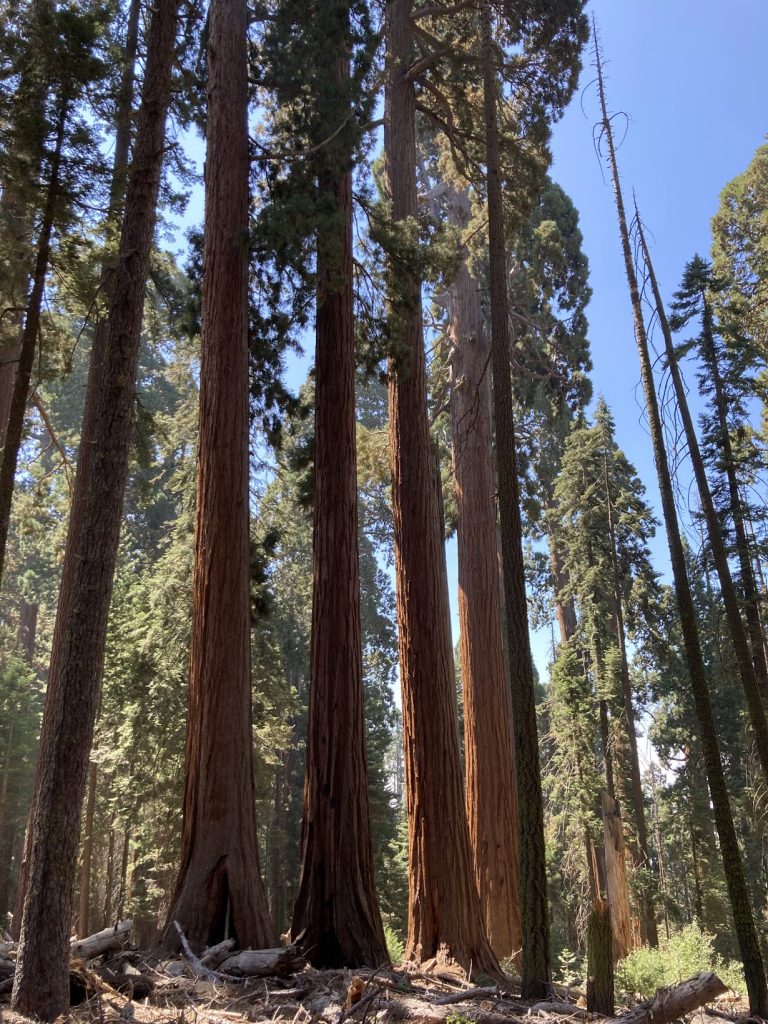Sequoia Fire Research Project
By Sophia Roberts, Wanqing Dong, Arely Lopez, Sydney Monte-Sano, Nikolai Belikov, and Zedong Li
Geography 182A, Winter 2022
Background
Giant Sequoia (Sequoiadendron giganteum) are the world’s largest trees by volume. They can live to be over 3,000 years old and almost 300 feet tall. Sequoias are highly adapted to wildfires with thick bark and branches high in the canopy. Unfortunately in recent years, extreme drought and high severity fire has proven exponentially more fatal for these monarch trees. Firefighting efforts have sometimes been concentrated at protecting notable sequoias such as the world’s largest tree, General Sherman. Sequoias can be wrapped in a fire-resistant foil in order to prevent the loss of these iconic trees (Stephenson, 2020). Through the combination of uncomprehensive prescribed burns and mass conifer death across the Sierra Nevada, there are immense forces behind the historic shift in fire patterns and behavior (Stephenson, 2020). Most notably, the 2020 Castle Fire burned through many sequoia groves with 30% of these groves burning at high severity (Stephenson, 2020). This led to an estimated 10 to 14% of all Giant Sequoias dying because of a single fire. Thus, this event has cast the species’ survival into a more precarious situation. Over the summer of 2021, two additional fires burned through large swaths of sequoia acreage, the impacts of which are discussed and analyzed in the report.

Study Area
- Giant Sequoias are only found in an extremely limited range along the western slope of California’s Sierra Nevada Mountains. The monarch trees grow in isolated pockets (or groves) where the conditions for their survival are optimal, allowing them to fulfill many human-defined superlatives.
- The study area for this project is the Southern Sierra Nevada Mountains. Since the project is analyzing the impacts of the KNP Complex and Windy fires, a focus is placed on Sequoia and Kings Canyon National Parks along with Giant Sequoia National Monument which is managed by the USFS as part of Sequoia National Forest.

Sections
Result: Question 2 – How does land management affect burn severity?
Result: Question 3 – Are Sequoias Greening?